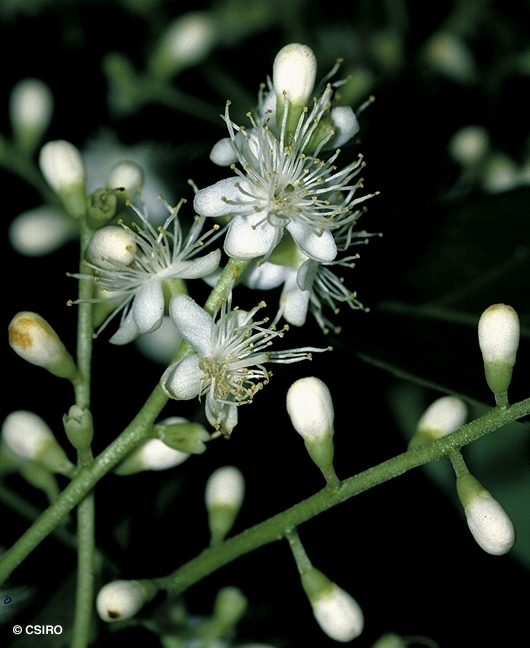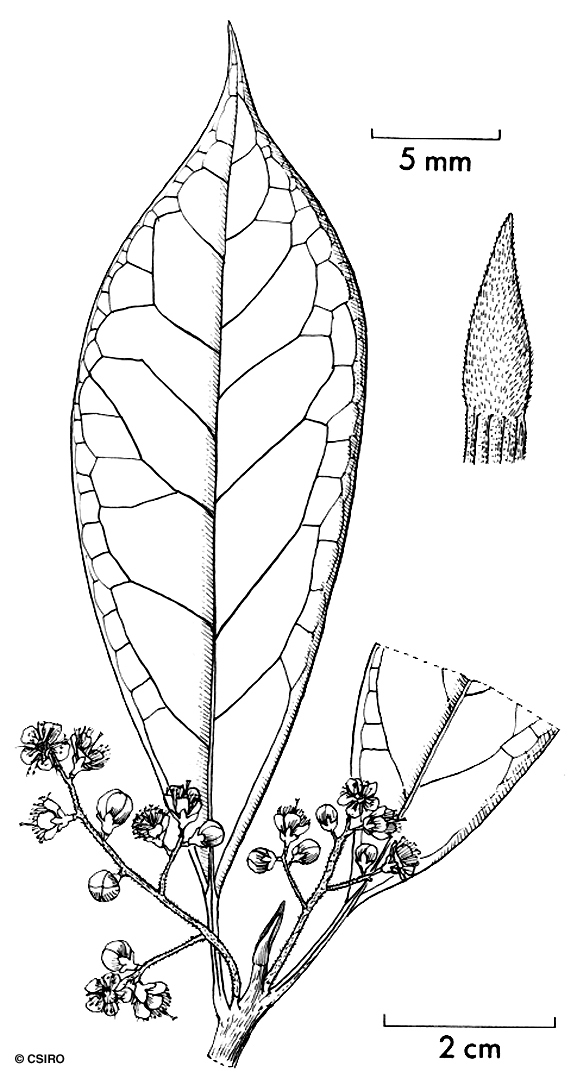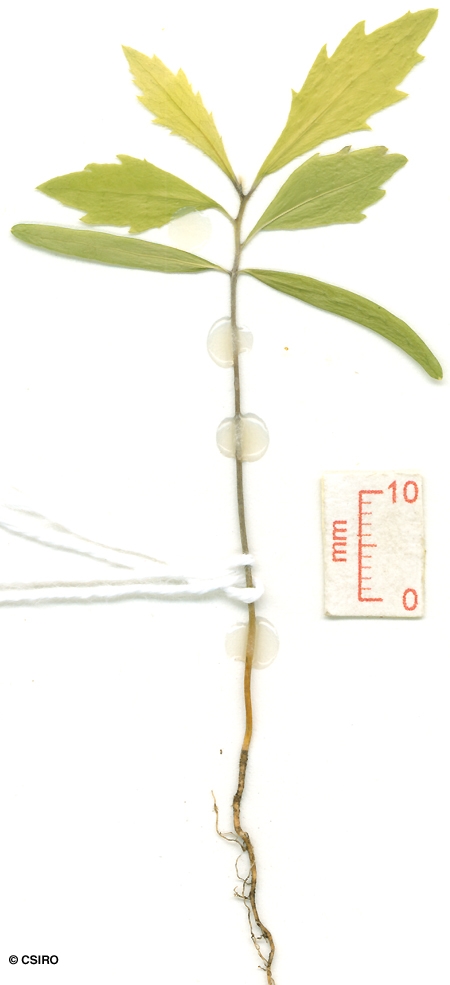Australian Tropical Rainforest Plants - Online edition
Symplocos puberula Jessup






Jessup, L.W. (2011) Austrobaileya 8(3): 246-247.
Hairy White Hazelwood; White Hazelwood
Hard, brown, brittle, worm-like inclusions in the blaze.
Inflorescence up to 7 cm long, axis pubescent or puberulous. Calyx lobes about 1-1.5 mm long. Corolla about 4 mm long. Stamens about 50-70. Style glabrous, about 2.5 mm long.
Fruits ampulliform, about 7-10 x 4-6 mm, calyx lobes persistent at the apex. Endocarp thick and hard, surface rugose, stone about 6-8 x 3.5-5 mm.
Cotyledons linear, about 12-22 x 2-3 mm, petioles about 1 mm long. First pair of leaves ovate, about 9-17 x 2-6 mm, margin with about 2 or 3 teeth on each side of the leaf blade. At the tenth leaf stage: leaf blade elliptic or obovate, apex acute, base attenuate, upper 2/3 of margin toothed, upper surface glabrous; petiole hairy towards the base.
Endemic to Queensland, occurs in CYP, NEQ and CEQ. Altitudinal range from near sea level to 1200 m. Grows as an understory tree in well developed rain forest on a variety of sites.
Symplocos cochinchinensis var. pilosiuscula Noot., Brunonia 4(2): 320 (1982). Type: Rijkers in Flecker herb. 14754 (L; isotypes in BRI, QRS) Speerwah, Upper Clohesy River, North Queensland, 5. vi. 1966.





